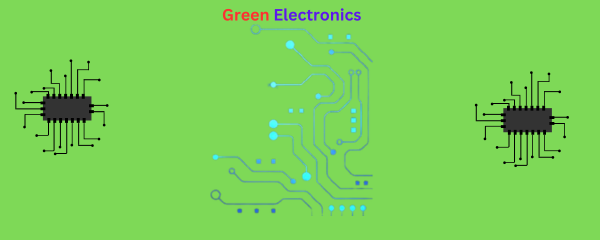
The electronics sector is changing in a sustainable direction at a time when technological innovation is fast transforming our lives. Green Electronics: Eco-Friendly Innovations are leading the charge to lessen the environmental impact of electronic equipment. They are defined by eco-friendly inventions and sustainable methods. The idea of green electronics is transforming the landscape of the industry, from design to manufacture and usage.
The necessity of eco-friendly electronics
Concern over the environmental impact of electronic devices is expanding along with the global demand for them. The employment of hazardous materials and energy-intensive techniques in traditional electronics manufacturing processes contributes to electronic waste and carbon emissions. The demand for more environmentally friendly options has fueled the expansion of green electronics.
Environment-friendly design:
Eco-friendly design is one of the tenets of green electronics. These days, manufacturers are putting more emphasis on making items that are long-lasting, recyclable, and energy-efficient. This entails using less toxic materials, such as lead, mercury, and cadmium, which may leak into the environment as a result of incorrect gadget disposal. Modern electronics are increasingly reliant on energy-efficient components, such as low-power processors and power-saving displays.
Innovation in Materials:
The advancement of green electronics is being driven by advances in material science. Alternative materials that are useful and good for the environment are being investigated by researchers. For instance, renewable resource-based bioplastics are being used to replace conventional plastics in packaging and casings. These materials lessen reliance on fossil fuels in addition to being biodegradable.
Sustainable manufacturing: Green electronics have an impact on the production process as well. Waste and energy consumption are being reduced through the adoption of sustainable manufacturing techniques. Lean manufacturing and zero-waste production methods help electronics assembly have less of an impact on the environment. Some businesses are also using modular designs, which make it simple to repair and upgrade gadgets and increase their longevity.
Green electronics must address the issue of electronic waste (or “e-waste”) in order to be successful. If not handled appropriately, discarded devices can pose major environmental risks. Manufacturers are creating products with easy disassembly in mind to address this issue, enabling the recovery and recycling of valuable components. To ensure safe disposal, several companies are even providing take-back programs.
Integration of renewable energy sources:
In terms of green technology, the way that gadgets are fueled is just as important as the gadgets themselves. Kinetic energy collection and the integration of other renewable energy sources are becoming more widespread. By enabling gadgets to run on renewable energy instead of conventional power sources, these technologies help cut down on carbon emissions.
Consumer Education and Awareness:
Consumer education is crucial to the commercial viability of green technology. Consumers with better education are more inclined to select goods with sustainable attributes and eco-friendly certifications. As a result, producers are emphasizing open communication about the environmental impact of their products more, giving consumers the information they need to make wise decisions.
The Way Forward:
The path to fully green electronics is still being traveled. For change to be sparked at every stage of the electronics lifecycle, producers, academics, legislators, and consumers must work together. The idea of a circular economy for electronics, in which products are made to be durable, repairable, and recyclable, is becoming increasingly attainable as new technologies come to light.
Finally, green electronics are changing the way we see technology. The electronics sector is adopting a more ecologically responsible strategy with an emphasis on eco-friendly design, sustainable manufacturing, and responsible disposal. The transition to green electronics not only lessens the industry’s environmental impact but also creates a model for other industries to imitate. The blending of technology and sustainability offers a promising road towards a greener and more sustainable world as we look to the future.
